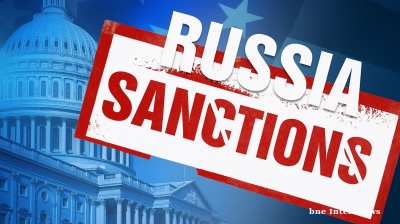The Belt and Road Initiative (BRI) is no less than an attempt by the Chinese to reshape the international order, but so far it has acted opportunistically and has no clear plan.
Bilateral investments with high interest as opposed to rules-based conformity are the conditions associated with the BRI up to now. Europeans’ knobbly knees knock at the realisation that they cannot possibly compete in such conditions and can only survive through co-option.
The internationalisation of China’s economic strategy has been met with an alarmist fanfare in Europe and particularly the US. Certainly, through the BRI, Beijing is seeking to establish a geopolitical foothold in the industrial policies of the countries that it is integrating into the global supply chain it is building, as it attempts to outsource certain industries in order to allow greater domestic focus on high-value sectors. One regional avenue in this respect is Central Eastern and Southeastern Europe (CESEE), where Chinese influence is proliferating.
While the BRI is no yellow brick road that terminates in Beijing, Western public discourse over China – with respect to CESEE especially – often conflates the types of economic interactions and the creation of its own Wizard of Oz. We need to think about the BRI in a different way.
Tomato, tomato
In most of the analysis China’s presence in CESEE is the misconception that Chinese investment is a fire spreading through the region in the form of infrastructure investment, for which the host states can never pay. There are two key points here.
First, construction, infrastructure and project financing are just one part of the overall investment and FDI picture – and here, Chinese influence is discernible, but overstated. But some interesting differentiations are recognizable. Within CESEE, Chinese construction and infrastructure commitment is split on a ratio of 70:30 between SEE and CE, respectively, even though the distribution of regional GDP is exactly the opposite. In selected SEE countries, such as Serbia and Bosnia, the sum of Chinese investment in infrastructure is on a par with pre-accession funding by the European Union (EU) and other development financing institutions. Elsewhere, in CEE, Russia is dominant in regional projects and financing, accounting for 55% of the total.
Second, with respect to FDI more generally, Chinese influence is limited but hardly indicative of a ‘rush’ despite favourable investment conditions. Accounting for 1% of total direct investments in CEE, China is well behind Germany and France, which make up 4% and 10%, respectively. Furthermore, only 25% of the Chinese FDI portfolio in CESEE is concentrated outside of Russia, Turkey and EU member states. Even within the EU, Chinese FDI in the CESEE region accounts for a maximum of 5% of the total investment volume, which is below the GDP weight of the CESEE countries relative to their economic power in the EU.
Within the BRI, CESEE currently accounts for 2-3% of all Chinese investments globally. This increases to 7% for CEE if Russia is included but this is a unique case. Although Russia enters the top 10 of countries in terms of BRI commitments, this reflects a longer-term bilateral relationship between Moscow and Beijing, which are jointly trying to counter the US geopolitical reach. Elsewhere, countries like Laos or Egypt have received the same amount of BRI-related Chinese construction and investment funding as the whole CESEE region. Such facts and figures speak more for a portfolio admixture than for a large strategic focus.
Bread and butter
As far as misconceptions go, the idea that China is a trading monolith is more accurate in CESEE than the perception it is some sort of calculating loan-shark: China is often among the top 5 import destinations for countries within the region. CE in particular is geared more towards China than Western Europe, with China accounting for almost 8% of total imports, compared to the Western European average of some 6%. On a country-by-country basis, Czech Republic, Poland, Slovakia, Albania, Montenegro and Serbia import more from China than Germany.
The CESEE dependence on China ends at imports: Germany dominates the export market share of the region, with China lagging at a distant 2.5-3% of the average total. As with FDI, China only has a significant presence in Russia, where it accounts for 12% and 16% of exports and imports, respectively, surpassing even Germany’s share of Russia’s foreign trade market.
Increasing foreign trade with China is not a strategic end for its own sake for most CESEE states. Rather, it reflects a recognition in regional capitals that exports must be diversified away from Germany, which is dominant. This holds true from a pure country risk or export concentration perspective. In addition, given current trends, Germany will not be an important technology partner in the future. Indeed, the idea that CESEE states are ‘selling’ themselves to China is questionable. The share of CESEE exports to China are currently well below Western Europe, the US and the OECD, with the latter states conducting an average of 20-25% of their foreign trade with China.
If anything, Western European states are more dependent on China, with many Western European economies having opened to China much earlier than in CESEE. Even then, Western Europe and CEE have the lowest relative trade shares with China compared with OECD countries and other emerging markets.
Side-entrance rather than gateway?
The idea of CESEE – especially the Balkans – as a gateway region has become culturally engrained over centuries. It provides a compelling narrative to fit this stereotype into the context of China developing a new Silk Road. However, it is not yet clear whether the region will act as anything more than an optional side-entrance. There are two reasons for this.
First, there is little evidence that CESEE is growing in economic relevance for China on a long-term basis. There is a clear commitment to improving maritime, road and railway infrastructure as part Beijing’s vision to diversify trade gateways away from the northern ports of Hamburg, Antwerp and Rotterdam, which handle the majority of Europe’s trade, including that of the south. Piraeus is a key port which Chinese interests have acquired to advance this end. However, other southern European gateways are now preferred, with Italy emerging as a more important partner owing to its extensive maritime infrastructure and already functioning connections to core Western European destinations
Second, the 16+1 initiative in CESEE has arguably under-delivered. Numerous flagship projects have turned out to be damp squibs. The Budapest-Belgrade high-speed railway, which was announced with much fanfare in 2013, has been scaled down to the point that it will no longer even high-speed. Political instability in Romania has disrupted the Cernavoda and Rovinari thermal power plant projects. No single major project has yet been completed. Those that are in the pipeline, such as the port of Piraeus, Croatia’s Pupin Bridge and Montenegro’s Bar-Belgrade motorway, are at this stage one-offs that do not join up geographically.
This underwhelming picture is partly the product of a challenging region that is more volatile politically. Yet Beijing also squandered its chance, failing to communicate to the EU in particular what its objectives were in CESEE. Furthermore, focusing its diplomacy on regional forums such as 16+1 generated more noise than action, with many mooted projects losing steam and falling by the wayside. At best, China has positioned itself with strategic opportunism in CESEE, without any clear grand plan.
Certainly, China has established itself as a niche player in CESEE. Its import penetration of the region’s markets provides an important foundation for further investment. In selected Western Balkan countries (Serbia, Bosnia), its investment sums in the last years were similar or close to those of the EU. But its muddled strategy raises the question whether CESEE will be anything more than a side-entrance in China’s global supply chain, as Beijing outsources low-value work to focus on industries that will facilitate its transition to a high-value economy. Although CESEE is sprinkled with digital hubs, Western (and, to a lesser extent, Central) Europe is better positioned to take advantage of higher end opportunities from China.
Geopolitics trumps economics?
The paradigmatic rebalancing of Europe from the US towards China occurred within a geopolitical climate in which multilateralism was taken for granted. With the hardening of US attitudes towards China, this has clearly changed. Moreover, Europe is not a passive actor, but an increasingly autonomous bloc with sufficient unity to uphold its own strategic interests. Current events – such as Russia’s military interventions and Brexit – suggest that CESEE states will tend (if begrudgingly) towards unity and toe the EU line.
Policy in Germany, France and possibly Italy will therefore be important bellwethers of CESEE attitudes towards China – and the current mood in Berlin and Paris, in particular, suggests that qualified Sino-scepticism is beginning to emerge. Given the low comparative trade shares of Western Europe and CESEE with China, this scepticism may even overreach, neglecting future development opportunities.
Recommendations
A more structured, realistic approach by Beijing towards CESEE would be to build upon the foundation it has already established. Developing a more balanced economic partnership would be key in this regard, whether by promoting exports from CESEE to China or by increasing the transparency of investments or investment capital. Some practical hurdles would remain; for example, the issue of euro financing in CESEE could be more important than in other countries where China is economically engaged (such as Asia or Latin America).
If China is to develop a strategic presence in CESEE, especially the Western Balkans, Beijing and the EU must demonstrate the complementarity of BRI in the region and European interests. For example, China could show in practice that its economic expansion plans (in part) fit with EU concepts of regional integration and cooperation. An important vehicle for this could also be the increasing financing of regional projects involving the AIIB. A lot of key EU states are members of this IFI, including in CESEE.
Yet in a world characterised by increasing polarisation – and where multilateralism seems rather retro – it is clear that there is nothing inevitable about the envelopment of CESEE by the Chinese dragon.




Opinion

COMMENT: ANO’s election win to see looser Czech fiscal policy, firmer monetary stance
The victory of the populist, eurosceptic ANO party in Czechia’s parliamentary election on October 6 will likely usher in a looser fiscal stance that supports growth and reinforces the Czech National Bank’s recent hawkish shift.

COMMENT: Ukraine's drone attacks on Russian refineries have probably reduced throughput by 30.4%, less than headline figures suggest
Ukraine has been hitting Russian refineries and caused a fuel crisis that has spead across multiple regions. The headline figure is that oil refining has been reduced by 38% since August, but digging into it and the reduction is likely less.

MACRO ADVISORY: The unintended consequences of Western sanctions
Since 2014, Western nations have hit Russia with a total of 26,655 sanctions (to mid-September 2025), with 23,960 coming after February 2022. The largest target group, with 13,611 sanctions, is state officials, business owners, and oligarchs.

PANNIER: Few will mourn passing of Turkmen Iron Lady Atajanova and Uzbek Grey Cardinal Jurabekov
Their deaths seem to have been conveniently overlooked for the most part by the authorities of today.
_Cropped_1759411324.jpg)



